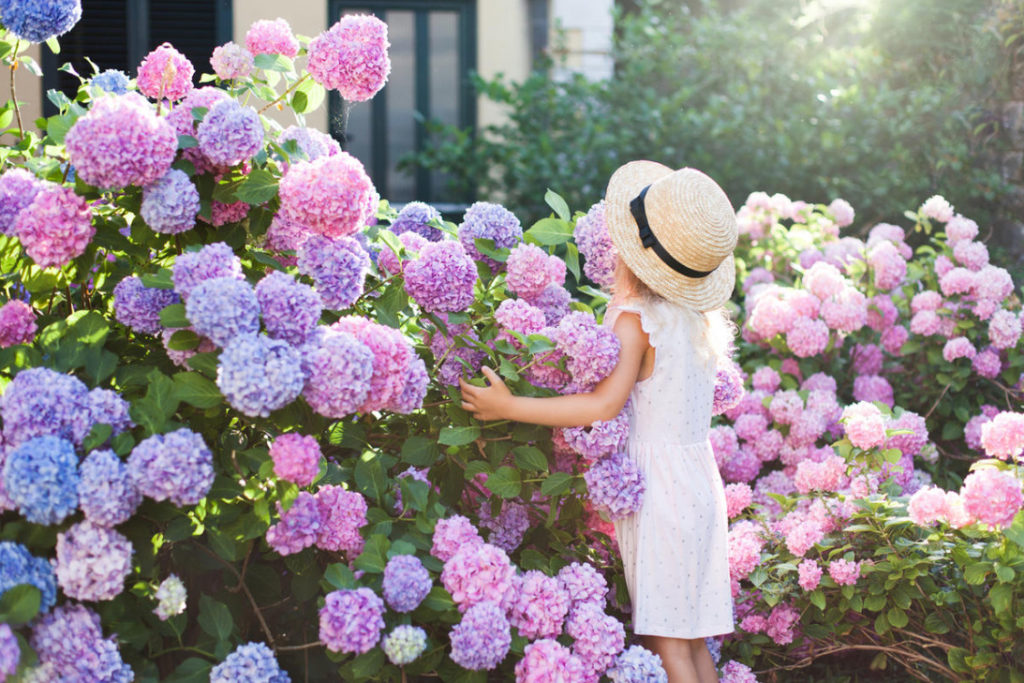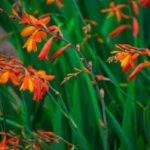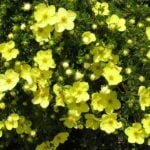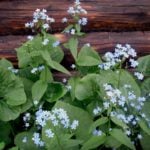The garden season is gaining momentum, everything is blooming and fragrant, and every new day brings us closer to the long-awaited summer. What flowers will delight the eye until autumn? We continue to get acquainted with luxuriously blooming perennials and remember the stories and legends that are associated with them.
1. Hydrangea. Purple sun
Initially, Hortense got her name from the sister of the heir to the Holy Roman Empire, Prince Karl Heinrich of Nassau. But later botanists dubbed it Hydrangea (“vessel with water”) — for the shape of the seed pods. The romantic Japanese went even further, and in the Land of the Setting Sun (from where, in fact, hydrangea began her journey across Europe), the spectacular shrub is called “Adzisai” (“purple sun”). The color of its petals can be very diverse: white or rich pink, blue and reddish, lilac or with pink tints.
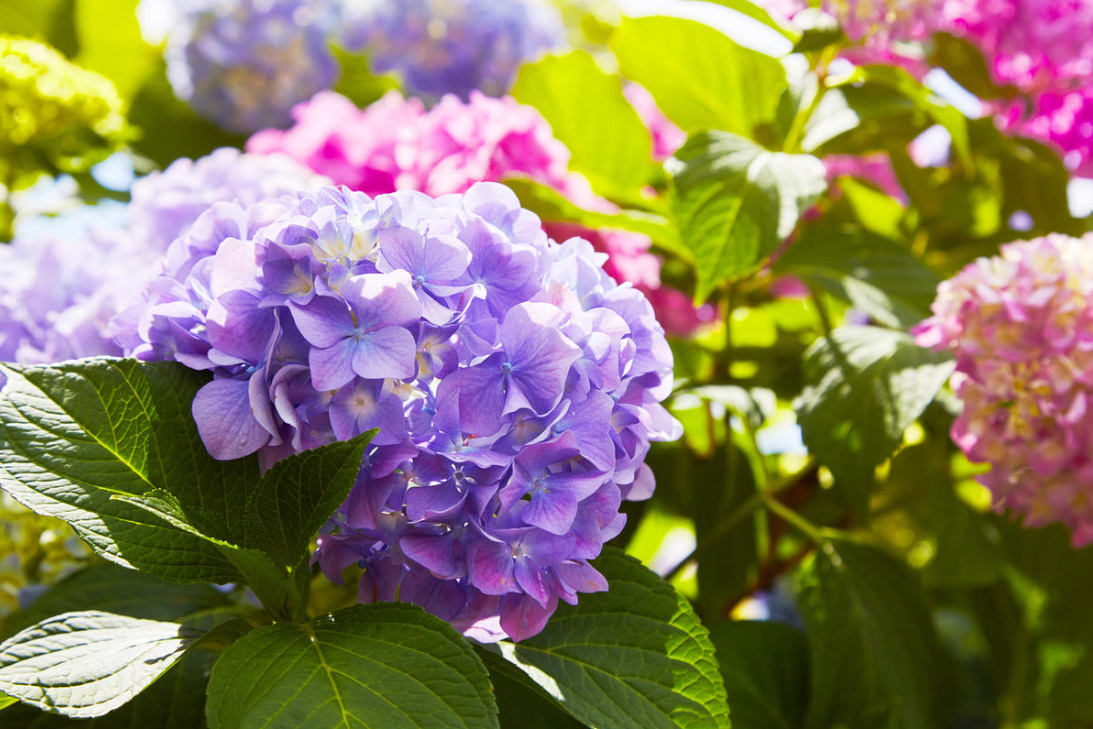
Hydrangea paniculata is distinguished by its extraordinary decorativeness, high winter hardiness and unpretentiousness, it grows well on clay soils. During flowering, its petals change color almost every day, and it turns out that on one bush there are lush brushes-inflorescences of three or even four shades at the same time.
Where to plant
The answer to this question depends on the variety: representatives of one “family” feel great in partial shade, while the other, on the contrary, cannot live without sunlight. The soil should be clay or loamy, but necessarily fertile, sandy soils are not suitable for hydrangeas. Most hydrangeas need an acidic reaction of the medium, then the color of the flowers will turn out bright, and a lot of “panicles” will form.
Which varieties to choose
- ‘Limelight’ is a neat shrub up to 2 m high with lemon—colored brushes (in partial shade) and boiling white, and later pinkish (in the sun), keeps its shape even without props. The height is within two meters. In autumn, the leaves turn from green to purple.
- ’Kyushu’ — the crown is spreading, fan-shaped, up to 3 m high, the flowers are white-pink with a delicate delicate aroma.
- ‘Grandiflora’ will delight with large pyramidal “panicles” that change color depending on time — from cream at the very beginning to reddish-green closer to the cold. Blooms later than the others.
- ‘Pinky Winky’ is a shrub with strong stems, inflorescences change color from white to purple—pink, leaves turn purple-purple in autumn.
How to care for
First of all – abundant and regular watering. Do not allow the soil to crack under the bushes, loosen the soil shallowly after precipitation or watering procedures and do not forget to pull out weeds. Mulching with needles or peat chips will help to keep moisture in the soil layer longer. Top dressing should preferably be carried out every ten days, alternating organic and mineral complexes.
What to combine with
Excellent partners for hydrangeas are coniferous plants, interesting combinations can be obtained by planting shrubs next to flower beds of timelessness. Also, the list of ideal partners can include astilbes, hosts, rogers and large ferns.
What to use it for
The shrub is suitable for both single and group planting, it looks harmoniously both in the hedge and on the shore of the reservoir. Given the need to constantly replant the plant until the age of five, it can be planted alternately in different parts of the garden. Hydrangea lends itself well to haircut and modeling.
2. Asclepius. Aesculapius Flower
The official name of this plant exactly repeats the name of the ancient Greek god of healing Asclepius, but he also has other nicknames. However, regardless of the nickname, the main advantages of the plant remain exoticism and the ability to give an original appearance to any site. This powerful herbaceous perennial with multi-flowered umbrellas of small numerous asterisk flowers belongs to a small group of “planted and forgotten”. Its height ranges from 50 to 150 cm, and the flowers are painted in white, yellow, orange and pink tones.
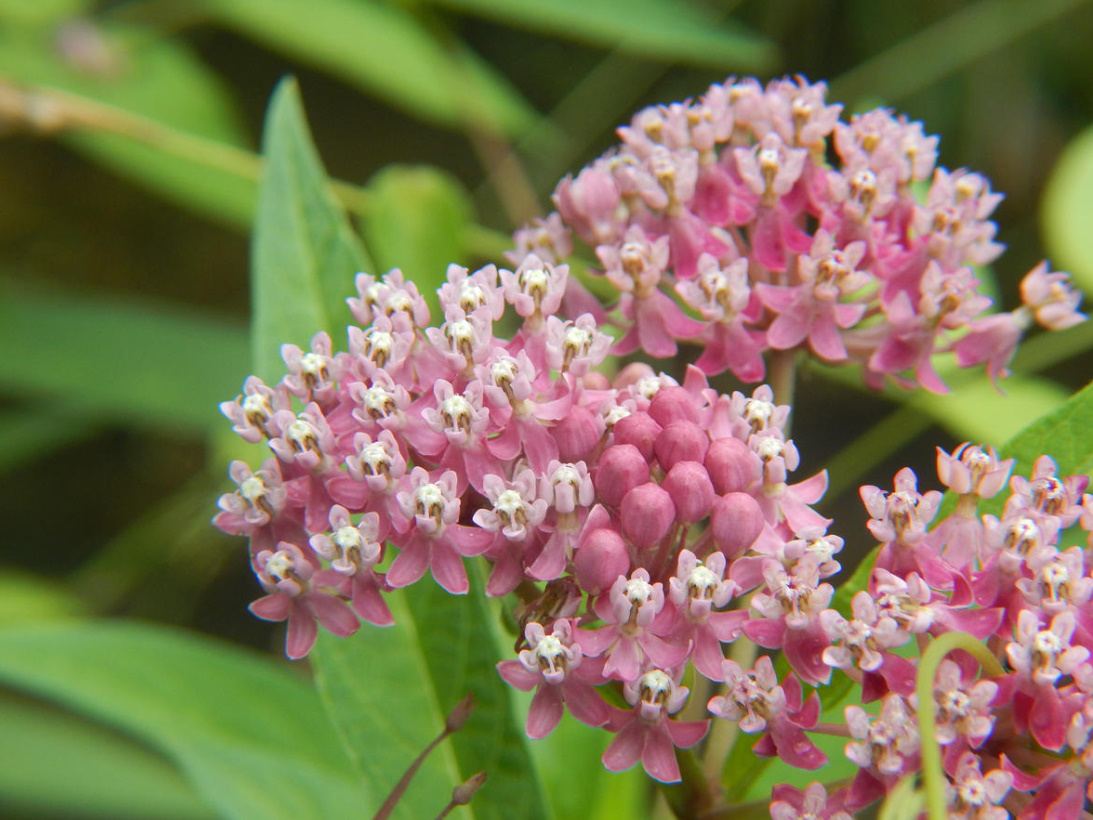
Where to plant
Find the most light and open area on the site: the cotton wool is distinguished by a powerful “physique”, and it needs a lot of space. He has no special requests for the soil — any except dense, swampy, damp, extremely calcareous and rocky is suitable. By acidity, it is better to choose areas with neutral or slightly acidic soil.
How to care for
The plant will not cause much trouble: it needs to be watered only during a severe drought, fed once in early spring (with complex mixtures). Even weeding and mulching are not considered mandatory elements of care, but it is necessary to trim the faded flower stalks.
Important: Asclepia is able to grow in one place without transplantation for more than 10 years.
What to combine with
Partners for a tall handsome man should be selected from large perennials that are not afraid of competition and dense plantings. Ideal companion plants: tall Campanula, Miscanthus, veronicastrum, aconite, Calamagrostis, Physostegia, Echinacea.
What to use it for
Asclepias is ideally suited for the role of a soloist. To face him and a place in a group planting (in modern—style gardens, landscape and less often – in country), where the plant creates bright spots and powerful arrays, or in extreme cases – a spectacular background for flower beds. A fragrant beauty is also appropriate in the neighborhood with gazebos, terraces and recreation areas.
What types to choose
- Asclepias incarnata —height up to 1.2 m. The flowers are pink-purple or red with a pleasant smell. Blooms in July for about 30 days. Winter hardy, for preventive purposes, mulching and shelter are better.
- Asclepias tuberosa — height 70 cm, plants with orange flowers are a good addition to the composition, decorated in green and red tones. Large inflorescences adorn the shoots from the beginning of summer and throughout almost the entire autumn.
- Asclepias syriaca — fragrant, light pink flowers (diameter 1 cm), collected in umbellate inflorescences. Flowering occurs in July and lasts about one month. It winters without shelter, and its strong aroma resembles a chocolate cake.
3. Delphinium. Pygmalion Candle
The legend associated with the appearance of delphinium is similar to the story of Pygmalion. A young man who lived in ancient Hellas, grieving for his beloved who had gone to the kingdom of Hades, created her sculpture and breathed life into the statue. Angered by such great audacity, the gods turned him into a dolphin. It was in this guise that he swam to the shore, where his revived love was walking and laid a delicate azure flower at her feet.
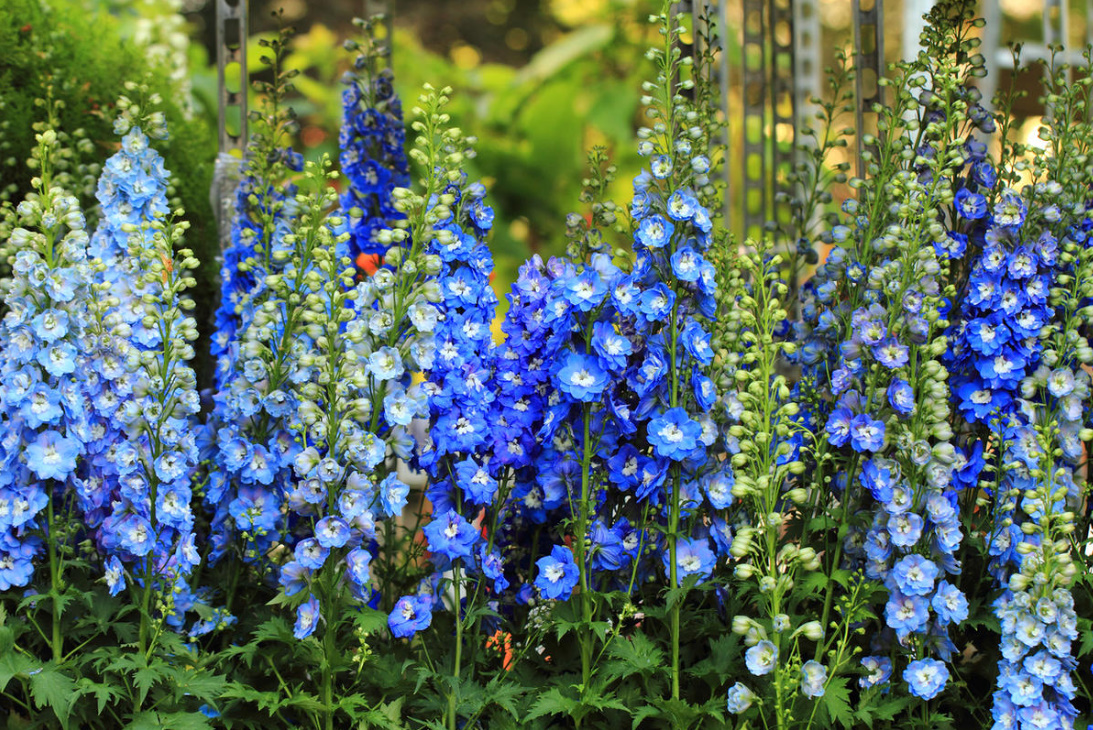
Giant delphinium candles stretch up to 1-2 m, and the flowers on them can be simple or double. The color is the most diverse: white, blue, lilac, blue, purple, pink, yellow and even red.
Which varieties and hybrids to choose
- Belladonna-hybrids (plants up to 150 cm tall, branched inflorescences): sky blue ‘Capri’, dark blue semi-double ‘Lamartine’, pink ‘Pink Sensation’, bright blue ‘Arnold Beklin’.
- Elatum-hybrids (giants up to 2.5 m tall with large flat flowers): cream ‘Butterball’, pure white ‘Lady Belinda’, blue ‘Mullion’, light blue ‘Berghimmel’, purple ‘Cinderella’, dark blue ‘Blue Tit’.
- Pacific hybrids (stem about 1.8 m high and very long inflorescence — up to 1 m, flowers are semi—double): ‘King Arthur’ – dark purple with a large white eye, ‘Galahad’ — pure white and one of the best varieties with blue flowers — ‘Blue Jay’.
Where to plant
It is necessary to plant plants in a sunny, slightly shaded place at noon, protected from strong winds, then the spectacular flowers will retain their brightness for a long time. Delphinium prefers fertile loam, but acidic soils are contraindicated for it.
How to care for
In spring, when the shoots reach a height of 10-15 cm, the plant should be fed with a solution of mullein (a ratio of 1:10), and the space around the bush should be mulched with peat or humus, after removing all weeds and loosening the soil. In order for the inflorescences to be strong and large, the bushes must be thinned: break out weak shoots from the inside of the bush (at the soil surface, where they connect with the root neck). Watering throughout the season should be regular. Especially on dry days.
What to use it for
Tall varieties are planted near verandas, stairs, gazebos, they harmoniously decorate these corners, and free planting provides good illumination of the lower leaves of the plant, preserving their decorative effect for a long time. Stunted species are good in rocky gardens.
What to combine with
In flower beds, the plant gets along well with perennials blooming until the end of summer and masking the delphinium after the end of flowering. It looks great next to pink and white aquilegia, and in the foreground you can place chrysanthemums, lichnis, daisies. Of the shrubs for joint planting, barberry, Philadelphus, red-leaved dwarf maple and roses are very good.
